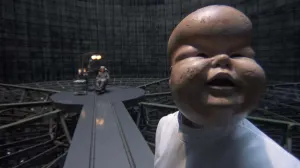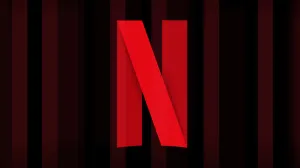With (unconfirmed?) reports that Henry Cavill is ready to move on from his role as Superman in DC’s shared movie universe, fans are already starting to question what the future of the character might look like on the big screen.
Videos by ComicBook.com
While Tyler Hoechlin’s onscreen Superman in the Supergirl TV series will reappear this year, 2018 will be a year without Cavill’s Superman appearing onscreen, and if the reports are true, that means his final appearance was that epic shirt-rip at the end of Justice League.
Hoechlin’s Superman is wildly popular with fans of the Arrowverse, who are excited to hear that both he and Lois Lane will be appearing in the forthcoming crossover event, which will introduce Ruby Rose’s Batwoman to fans and set her up for a potential show of her own.
So what do we hope to see from the next Superman movie? What can filmmakers and Warner Bros. learn from Richard Donner, Zack Snyder, and the Arrowverse?
We’ve boiled it down to a few bullet points below.
Disclaimer: These should not be misconstrued as attacks on the Donner films, the Snyder films, or anything else. When we use prior interpretations as counterpoint, it is largely to demonstrate that Superman is a flexible character open to many legitimate interpretations, and that changing what has not worked in the past can lead to a version of the character that appeals to new and untapped audiences.
A Flat Arc
In K.M. Weiland’s book Creating Character Arcs, the author discussed the virtues of three major types of arcs that a main character will have in a story: the positive arc, where a character who is somehow deficient gets “better” over the course of the series; a negative arc, in which a “good” character goes bad; and a “flat arc,” which is essentially no character arc at all.
In a video essay by Just Write, posted above, a number of characters are discussed who have “flat arcs,” and the idea is essentially that the character starts out in one place, and that their arc is nonexistent not becuase nothing changes, but because they change the world around them.
Examples like Back to the Future and Paddington are heavily featured in the essay, but as we listened to it a while back, the whole time we found ourselves thinking “this is Superman.”
Before we could feel too clever, though, the essay ends with the observation, “…in conclusion, that’s how you should write a Superman movie.”
There is a lot of truth to this, at least from one point of view, and that is the point of view of people who did not like Zack Snyder’s take on Superman.
Almost as much as the decision to kill General Zod, Snyder and Cavill’s Superman was criticized for being uncertain, for having to grapple with a world that distrusted him, and for allowing feelings of detachment and alienation to make him hide his proverbial light under a bushel. The three-movie arc of Man of Steel through Justice League is Clark learning how to BE the Superman we all know and love, and eventually taking his place as the world’s premier hero at the end of the third movie.
Snyder has been open almost from the word go that this was his design, but for various reasons, some fans were not interested in seeing that version of Superman. For those people, who are pretty vocal about their discontent on the internet, introducing a Superman who is already where he needs to be — think Christopher Reeve’s version — would be a solid starting point. It would also create a stronger counterpoint to Lex Luthor than the movies had, since a Superman who is always confident in his righteousness can more easily stand up to someone like Luthor, who is typically depicted as being equally sure that he is always in the right.
Get Away From Krypton

First of all, everyone knows Superman’s origin. Next time around, we can boil it down to those four panels from Grant Morrison’s All-Star Superman and everyone, including casual viewers, should “get it.”
Okay, now that we have that established — let’s spend less time talking about Krypton.
Most of the best-reviewed and best-selling Superman stories of the last thirty or so years have featured what longtime Superman: The Man of Steel artist Jon Bogdanove called a “Clark-first” Superman. Clark Kent is the man, and Superman is the disguise. This is a version of Superman who was raised since a baby on Earth and who identifies as human. If Superman is, as so many have written, an immigrant’s story, Superman is an immigrant who thinks fondly, but not necessarily often, of home.
Since Superman: The Movie introduced the character to the modern blockbuster era, a huge amount of screen time has been spent dealing with Krypton, Kryptonians, and the mythology and backstory of Kryptonian life.
Right now, we have a Supergirl TV show that features a character who actually lived on Krypton and lost basically everything she had when the world died. We also have Krypton, a fantastic show that takes place on Krypton generations before Superman’s birth and is essentially all “mythology.”
It seems like, in an environment like that, the next Superman movie can afford to move away from the Zods and Doomsdays and even the Eradicators of the world and deal with other threats that are not so directly tied to his own backstory. This ties in with some complaints that audiences have about movies like The Dark Knight and Man of Steel, which essentially posit that supervillains are somehow a “response” to superheroes and that on some level, threats like The Joker and Zod would not be taking lives if it weren’t for the hero.
Scrap that, and work with one of the dozens of other villains that Superman has battled over the years. You could even do an alien — Brainiac Mongul, or even someone more obscure like Massacre or Maxima — without making it Kryptonian aliens in particular.
Develop Metropolis

The flip side of getting away from Kryptonian mythology? It gives you more time to set up Metropolis, Clark’s supporting cast, and the aspects of his life that define who Superman is when he is not dropping buildings on bad guys’ heads.
DC has the advantage of most of its heroes existing in cities that were made up for the purposes of their stories, and have rarely really taken advantage of this. Donner’s Superman lived in what was so identifiably Manhattan that they did not bother to do away with the Statue of Liberty, and the cities of the Arrowverse rarely have any discernible character of their own. Wonder Woman, by storytelling necessity, took place in actual, historic settings, and those had more identity than the Metropolis of Batman v Superman: Dawn of Justice.
The city itself is all well and good, but more importantly, let’s give Clark’s supporting casts identities and personalities. In the Snyder movies, there were quite a few name-drops, but having a character nominally be Steve Lombard or Ken Braverman or Jimmy Olsen without developing any identifiable personality traits for that person — even if they aren’t based directly on the attributes from the comics — is as bad as not having them at all.
Lois Lane

…Which of course leads us to the most important piece of the puzzle.
Lois Lane first appeared in Action Comics #1 and is the yin to Superman’s yang. Without Lois, there is little doubt that Superman would not be as compelling as he is, and while Man of Steel did a good job of establishing her as tough, smart, and independent, she was wasted in Justice League.
The definitive Lois for any individual reader will vary with their age and experience; there have been a number of terrific portrayals of the character, who is as versatile and complex as Superman himself. Digging back through the archives to find what worked and what didn’t from Teri Hatcher, Erica Durance, and beyond should give a good starting point…but going to the comics is where the real heart of the character will be found.
Should Lois and Clark be married in the movies? Who knows? It probably depends on what version of Superman you are using, from what point of his life and career. they are currently struggling with the same questions on Supergirl, with the introduction of a Lois Lane who has been established as Clark’s romantic partner and in on his secret…but little else.
Treating Lois with respect is one of the most important elements of telling a truly great Superman story. This is a must.
Jonathan and Martha Kent

Again, there is a high degree of elasticity here: are the Kents alive? Is just Martha alive? What happened to them?
None of that really matters. What matters is who they are, and what they mean to Clark.
That was a shortcoming of Man of Steel: Clark as the point of view character mostly informed the way others reacted to him, rather than reacting to anyone else. We saw relatively little of how the Kents shaped him into the kind of person who would lay down his life to battle Doomsday in the streets of Metropolis, but rather saw how raising a powerful alien impacted the Kents, making them paranoid and feeding into Martha’s nurturing instincts when Clark needed help.
Again, this might speak to a reader’s preferred Superman era: in the ’80s and ’90s, the Kents were still alive by the time Clark had grown to become Superman, and served as a sounding board for him when he had problems. This informed a generation of readers as to how the Kents helped shape Clark’s moral code and support him through rough periods without resorting to just saying “they were the kindliest couple I ever knew.”
Using the Kents’ death as story fodder is not inherently a bad idea; it worked really well for Geoff Johns and many others before and since. But what really matters is not how they died, but how they lived (see what we did there?), and giving a sense of that would deepen Clark’s backstory without having to necessarily go full Smallville to do it.
The Daily Planet

Current Superman and Action Comics writer Brian Michael Bendis has correctly noted that Clark’s decision to become a reporter — to take a job where he is serving the public even when he is not on the clock as Superman — is something that helps define him as a person.
Clark took a job that puts him where the action is, one that can be dangerous, and makes him a target for everyone from mobsters to corrupt cops and politicians, but pays relatively little money.
Building up the Daily Planet is an easy way to give Metropolis character without going full Gotham and making the city an ever-present character in the show. It also makes sense, given that most of the time he is not wearing the cape or wooing Lois, Clark spends at work.
The notion of an all-American hero who helps shape our idea of morality also being a reporter in the era of “Fake News” is easy storytelling, and working at a “great Metropolitan newspaper” while so many of those begin to crumble under the weight of cultural and technological changes presents a side of Clark Kent that has never really been explored onscreen before.
A Cosmic Scope

Superman is a cosmic character.
This might be a controversial take, since most of his best stories have taken place in Metropolis, but by his very nature, Superman is a character who can and does impact the wider DC Universe on a massive scale. His mere presence confirms the existence of extra-terrestrial life, which then means there could be “bad” aliens, and even absent that, Superman himself will likely wonder about what else is out there once he learns of his heritage.
Lean into this. While we stand by the idea that Krypton is pretty well-covered without delving deep into it during the next Superman movie, the reality is that for many people, the best stuff in Man of Steel was the Krypton sequences, which were wildly imaginative and cinematically interesting. There is no reason that level of ambition could not be applied to creating Thanagar or Colu or something like that in the interest of building up the backstory to whatever other characters might come along.
Don’t Try to Be Donner

After dour and violent sequences turned some fans against Zack Snyder’s Superman, the refrain often came: Do what Donner did.
But that way lies Superman Returns.
While there is a legitimate argument to be made that Superman Returns is better than it is given credit for, the reality is that nobody wanted more of that world for a decade after it was released, and it only started to be redeemed in the eyes of a lot of fans after Zack Snyder ran away from the Richard Donner mold and what he delivered was not what his most vocal critics were hoping for.
In his handful of appearances on Supergirl, Tyler Hoechlin’s Superman seems to have struck a balance, feeling at home in the story that he appears in while evoking the spirit of Christopher Reeve’s Superman. A benevolent and bright presence who feels powerful but not menacing, Hoechlin exists in the vein of Dean Cain’s Superman, proving that you do not have to ape Donner or Reeve in order to satisfy audiences…and you can deviate from, without outright rejecting the lessons of, Superman: The Movie.
Don’t Try to Be Batman

A lot of these messages may point in the direction of a somewhat more “grounded” and less science-fiction approach to Superman, which is a legitimate take, but can easily be taken too far in the other direction.
Tom King’s just-released Superman 100-Page Giant does something relatively remarkable: it introduces the idea of Superman speaking to his dad in hologram form, asking for advice on how to be a better man and a better hero.
…But it isn’t Jor-El. Clark is sitting there, under a technicolor Kansas sky, without his House of El sigil on, talking to Jonathan Kent with a smile on his face and a bottle in his hand. There is no mournful, meaningful glance at relics of a dead planet. There is just a warm moment with the man who helped shape Superman’s moral code.
King, who has been writing Batman for the last two years, managed to avoid making Superman into a tragic figure, even while utilizing one of the great tragedies of Superman’s life as a springboard.
The best Superman stories do not involve him feeling alienated from Earth’s people becuase of his Kryptonian heritage, and they do not involve him obsessing over losses or suffering an ever-escalating mountain of defeats. The best Superman stories are the ones where he can inspire people — something, again, Batman cannot do.
…And they happen, at least mostly, in the daylight.
Show, Don’t Tell

This is, as we suggested earlier today, an area where Zack Snyder sometimes struggled despite his best intentions.
Superman works best as an inspirational figure. That’s where the whole “flat arc” thing comes in. But it is not enough to just be told over and over again in dialogue how inspirational he is.
This is a tricky balance; you want to show your character overcoming adversity and struggling to meet the challenges of the narrative, otherwise there is no stakes and the movie will feel boring.
(Visual spectacle can help audiences delay the boredom, but cannot cure it altogether, especially in an oversaturated blockbuster market. The days of dropping a ton of money on a script that’s just okay and selling it to the audience because it looks amazing are mostly over.)
Still, Snyder’s Superman faced not just adversity but a steady stream of antipathy from the general public, the government, and nearly every character in all of the movies who wasn’t Lois Lane. In Batman v Superman, we were then asked to believe that he was an inspiration to millions and that the world would be lost without him. That narrative fits the Superman archetype audiences are familiar with, but was not reflected in the world of the film. It felt like an afterthought, and its inclusion raised all kinds of questions about the actions of Lex Luthor, Batman, and the U.S. government that go unaddressed in the theatrical cut of the film (and largely unexamined in the extended cut).
“Show, don’t tell” is one of the first things they tell you in screenwriting school, and a lot of people still forget it. In the case of a character like Superman, it should be easy: the montage of “super-feats” — where the Man of Steel saved dozens of grateful citizens, none of whom reacted in terror at his presence — set the stage for everything that came after it in Richard Donner’s Superman: The Movie, and without breaking our own “don’t just copy Donner” rule, it should not be very hard to suss out a way to make this rule work for the next filmmaker to take on the big, blue boy scout.








